At first it felt like I’d walked into “The Shawshank Redemption,” except that as the heavy steel bars clanged shut behind me, I knew I could leave whenever I wanted, not years in the future. The Missouri State Penitentiary closed in 2004 after housing some of the state’s most violent criminals over the previous 168 years. Instead of demolishing it, though, the Jefferson City Convention & Visitor’s Bureau has managed to keep it open for tours. That makes for a great opportunity for photographers, a chance to visit and document the past
I was there with some friends in late April for a wander through what Time magazine once called “The bloodiest 47 acres in America.” It felt like stepping back in time to the 1950s as we explored the remains of the old place. In the lead was a great guide, who shared its history along with some fascinating stories. Over the course of the next five hours we explored the grounds and the two main buildings, top to bottom, from cells to guards’ offices to showers to solitary confinement. Near the end of the tour we visited the gas chamber, where 40 inmates met their end, set off by itself away from the rest of the complex.
For photographers, it was a rare chance to photograph a place most people rarely, if ever, get to see. In fact, it offered such great visual opportunities that I’m returning to lead a workshop there on Sunday, July 11. Look at the photos and stories below, and you’ll understand why. Let me know if you’re interested in joining me, and you can find details about the workshop here.
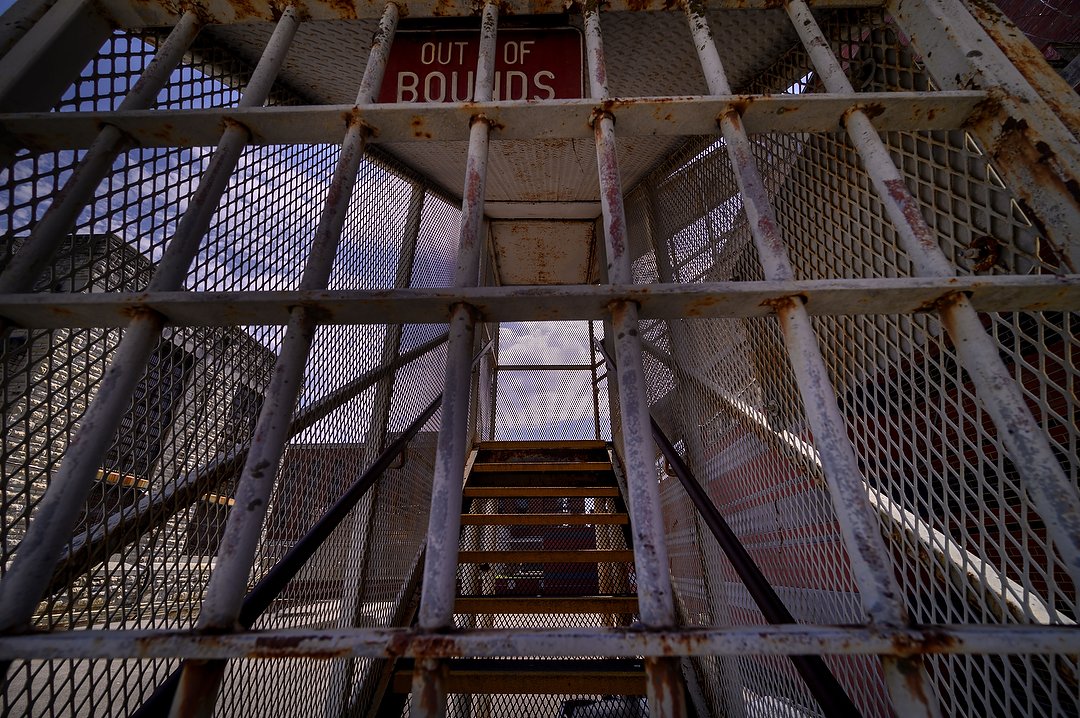
Metal bars and fencing are everywhere, along with signs indicating who was allowed where. Things like that made this visit a real exercise in composition. Nikon Z 6, Aperture Priority, Sunny white balance, ISO 80, 1/400 at f/9 in Matrix metering, -1.3 EV, Nikkor Z 14-30mm f/4 S lens at 14mm.
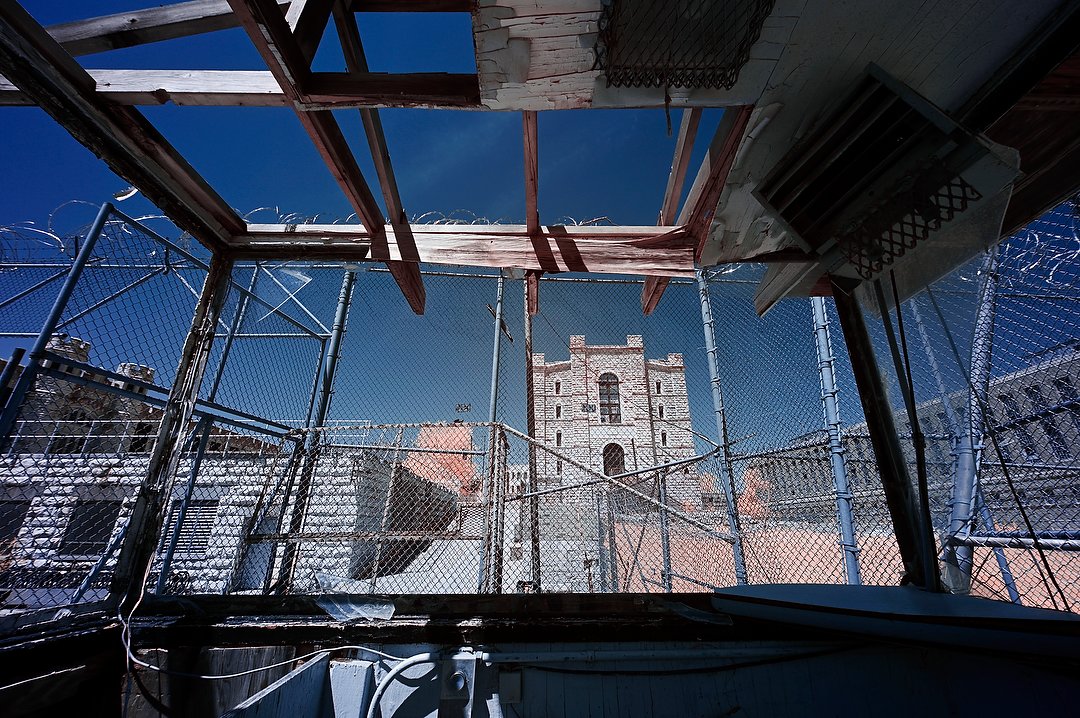
I had one of my cameras converted to full spectrum, which allows me to shoot infrared with it. That’s what gives this image an unusual feel, shot from the inside of what’s left of a guard tower outside a back entrance to the prison. Nikon Z 6, Aperture Priority, Preset white balance, ISO 100, 1/200 at f/8 in Matrix metering, +2.0 EV, Nikkor Z 14-30mm f/4 S lens at 14mm.
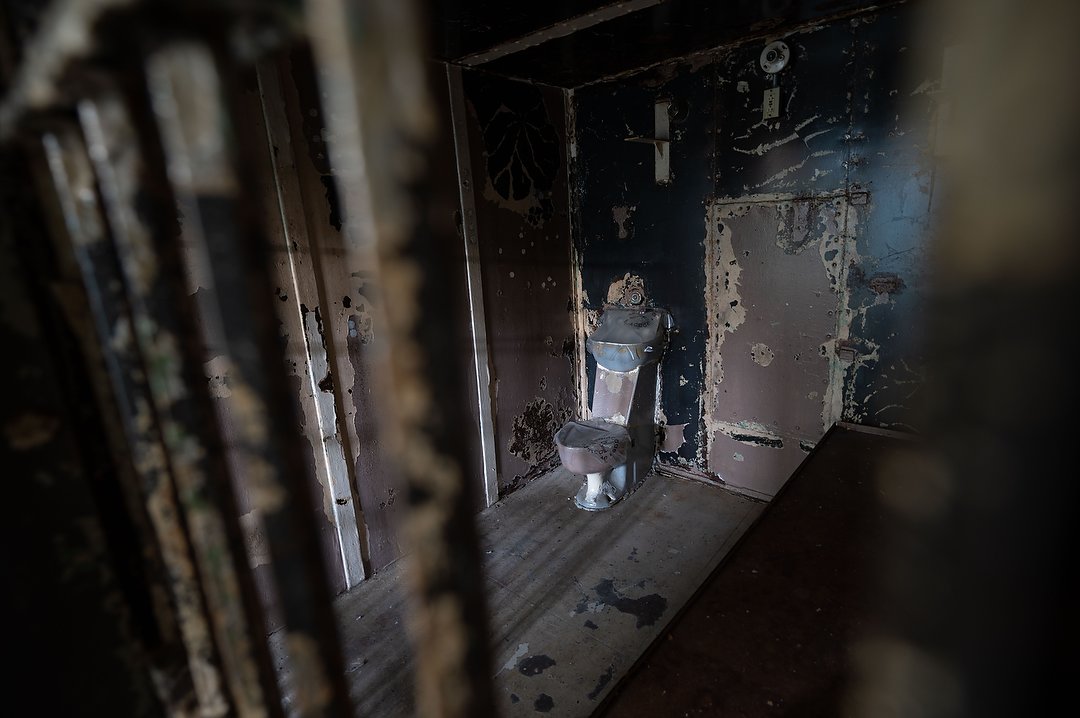
Most cells are small spaces with peeling paint, a metal washstand/toilet and metal bed. Shooting through the bars emphasizes the feel of peering into a forbidding place. Nikon Z 6 II, Aperture Priority, Sunny white balance, ISO 400, 1/1.6 at f/4 in Matrix metering, -1.7 EV, Nikkor Z 14-30mm f/4 S lens at 17mm.
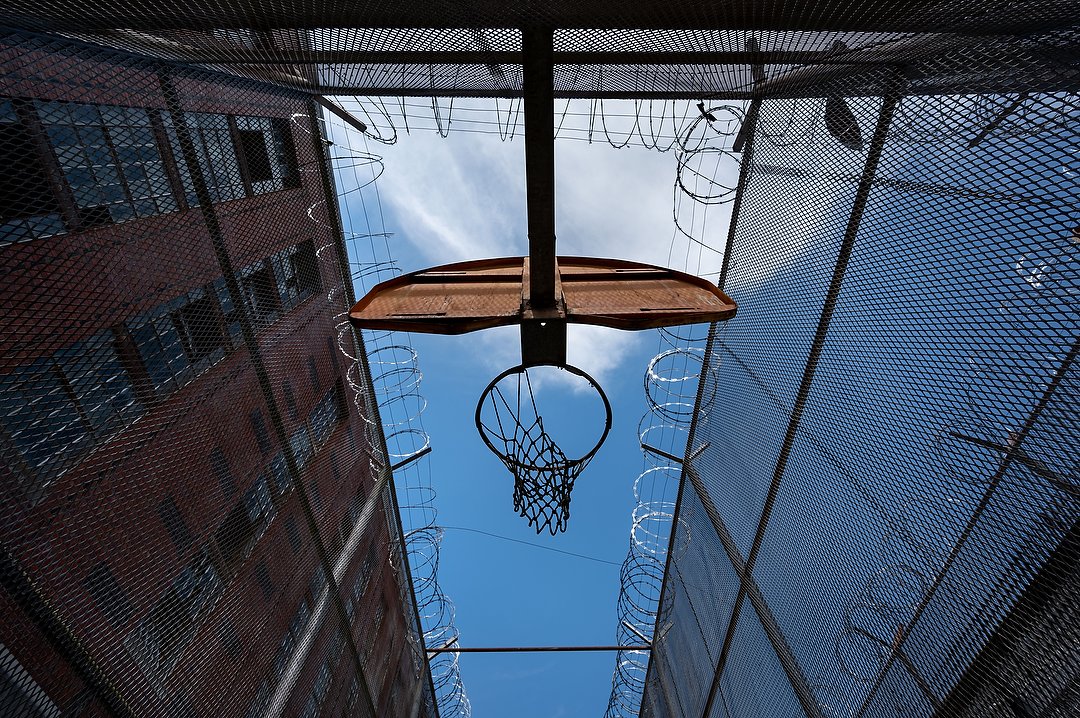
There were a few outdoor areas for the inmates to exercise, including a series of narrow pens with basketball goals. Even the view up to the sky was fenced in with razor wire. Nikon Z 6II, Aperture Priority, Sunny white balance, ISO 100, 1/400 at f/8 in Matrix metering, -0.3 EV, Nikkor Z 14-30mm f/4 S lens at 15mm.

The two large buildings that are open for tours are composed of multiple levels of cells, which we had free run to explore. Nikon Z 6, Aperture Priority, Sunny white balance, ISO 160, 1/5 at f/8 in Matrix metering, -1.7 EV, Nikkor Z 14-30mm f/4 S lens at 14mm.
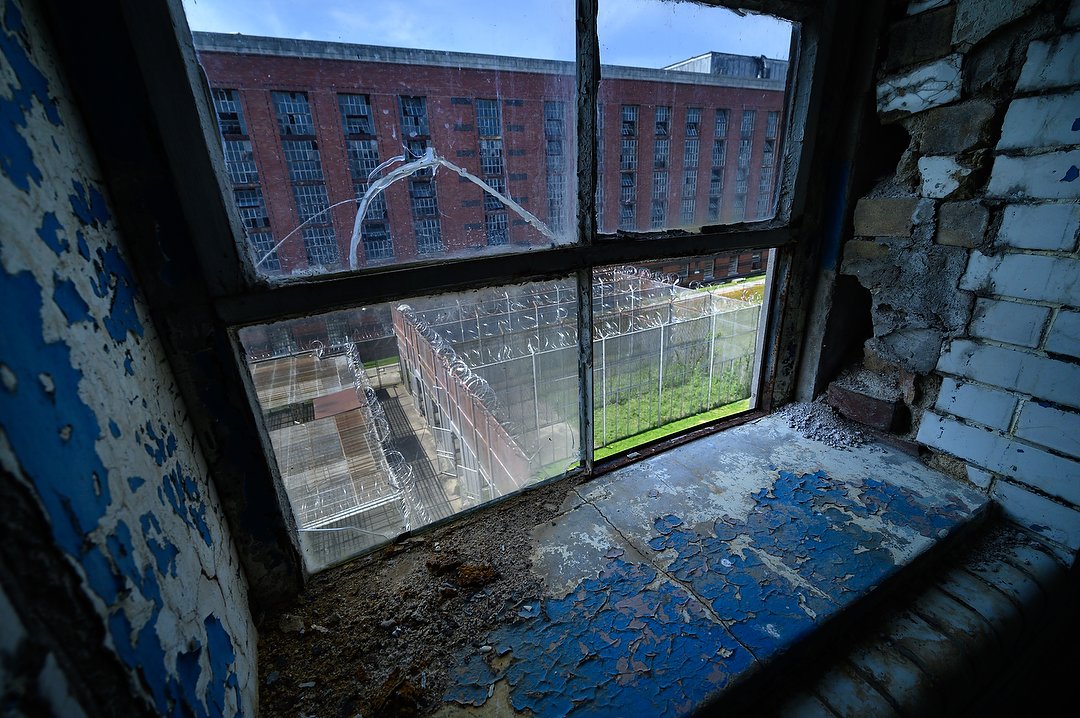
The buildings and grounds are in a state of decay, which offers lots of good photo possibilities, including broken windows and deteriorating masonry. Nikon Z 6, Aperture Priority, Sunny white balance, ISO 400, 1/800 at f/8 in Matrix metering, -1.3 EV, Nikkor Z 14-30mm f/4 S lens at 15mm.
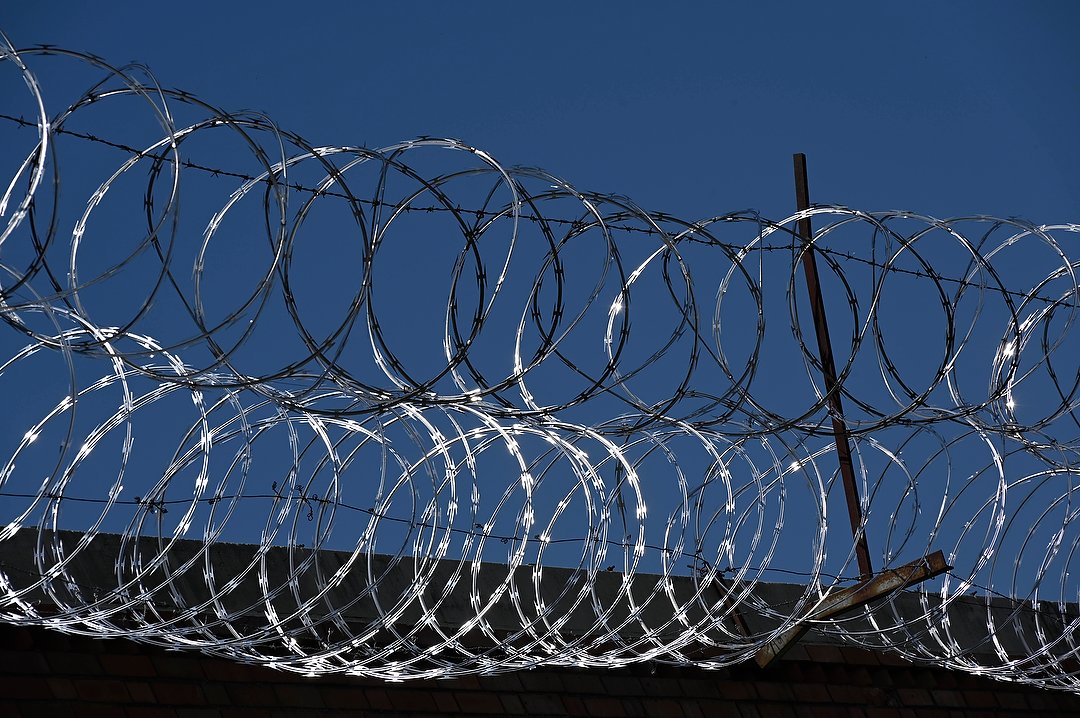
There’s no shortage of razor wire in and around the prison. Sunlight reflecting off a section makes it especially stand out against the deep blue sky beyond. Nikon Z 6 II, Aperture Priority, Sunny white balance, ISO 100, 1/500 at f/13 in Matrix metering, -1.0 EV, Nikkor Z 24-200mm f/4-6.3 VR lens at 200mm.
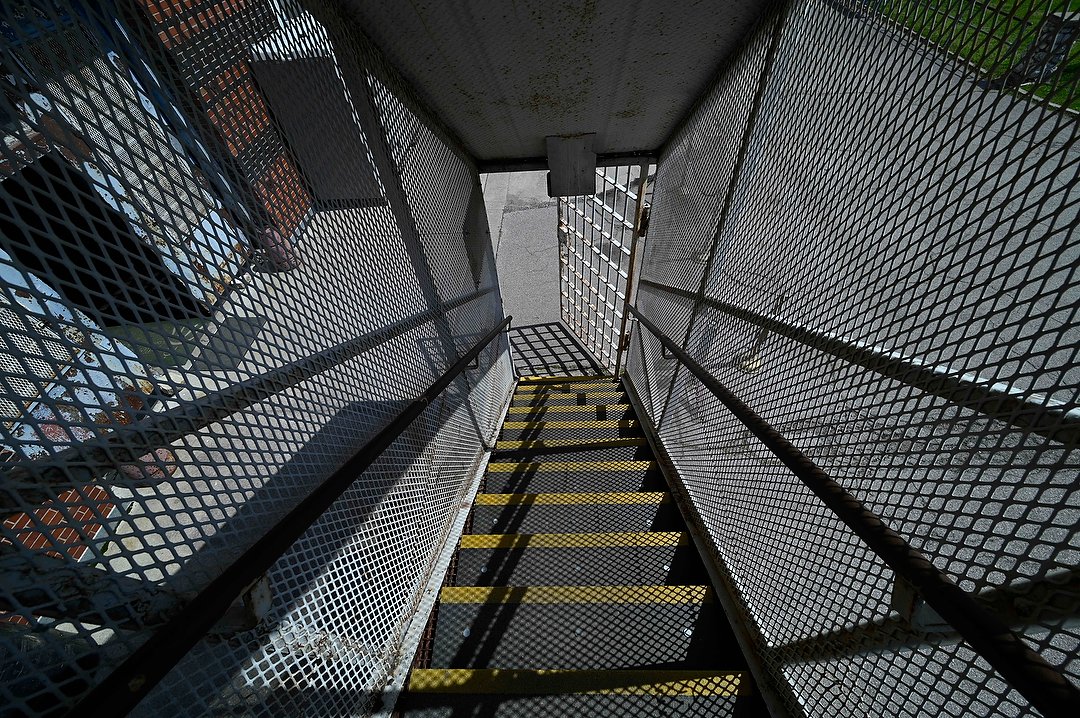
There are very few doors leading outside from the cell blocks, and even then the “outside” is still within the prison walls. Nikon Z 6, Aperture Priority, Sunny white balance, ISO 160, 1/800 at f/8 in Matrix metering, -0.7 EV, Nikkor Z 14-30mm f/4 S lens at 14mm.
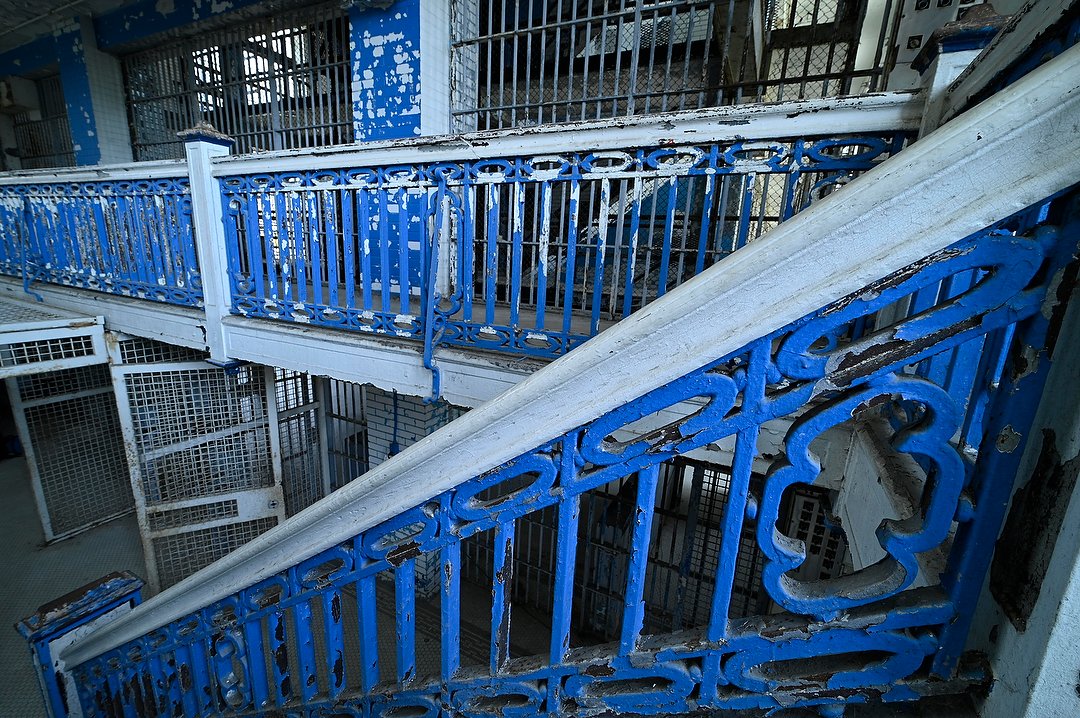
It was a bit jarring to find some small areas of bright color, or woodwork. Most of the interiors are unceasingly grey. Nikon Z 6, Aperture Priority, Sunny white balance, ISO 640, 1/20 at f/10 in Matrix metering, 0.0 EV, Nikkor Z 14-30mm f/4 S lens at 15mm.

Our excellent guide, Ray, leading us down to a row of cells below ground level. Nikon Z 6 II, Aperture Priority, Sunny white balance, ISO 1000, 1/25 at f/5.6 in Matrix metering, 0.0 EV, Nikkor Z 24-200mm f/4-6.3 VR lens at 24mm.
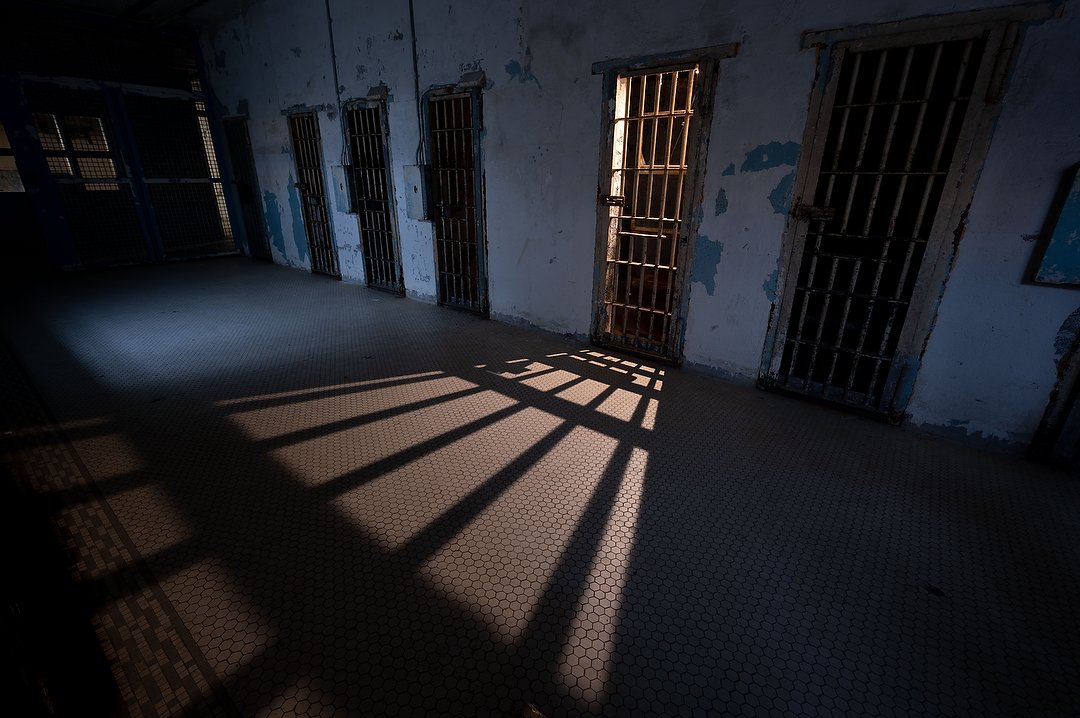
There was very little daylight filtering into that lower section, which made it a good place for me to set up some lighting. I used one Lume Cube on a small stand inside the cell to create this scene. Nikon Z 6 II, Aperture Priority, Sunny white balance, ISO 200, one-second at f/8 in Matrix metering, -1.3 EV, Nikkor Z 14-30mm f/4 S lens at 16mm.
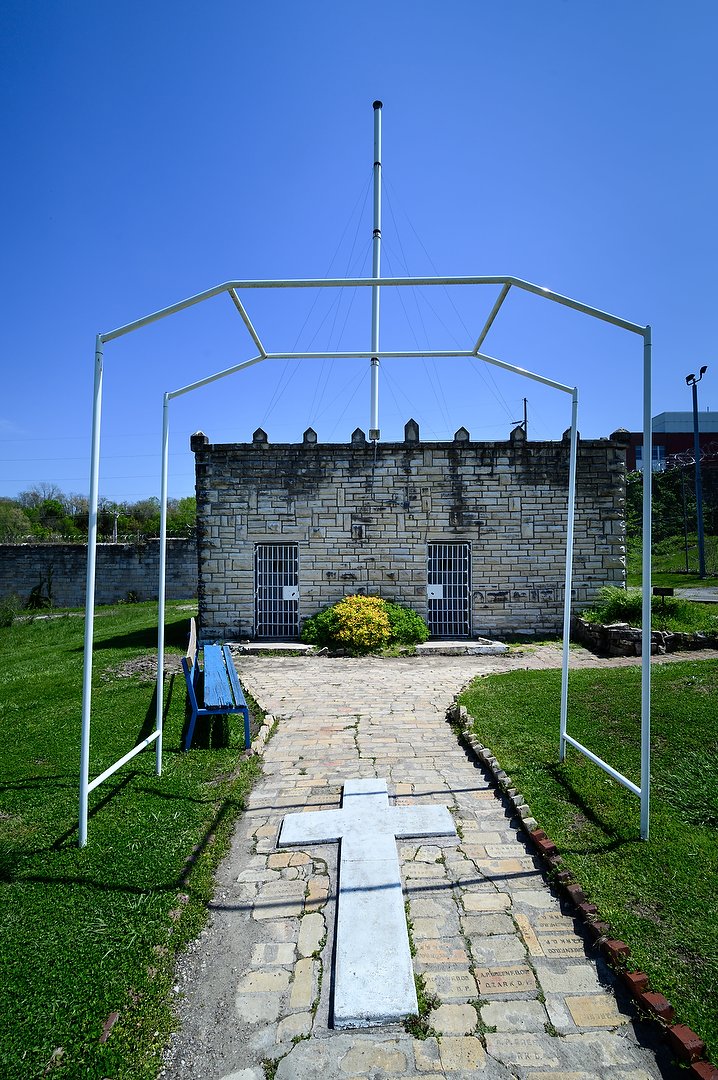
This small building houses the gas chamber, and is set off from the others. The twenty-foot pipe on top served to exhaust the cyanide gas. Nikon Z 6, Aperture Priority, Sunny white balance, ISO 100, 1/200 at f/11 in Matrix metering, 0.0 EV, Nikkor Z 14-30mm f/4 S lens at 16mm.

This is where the prisoner awaiting execution was kept until the gas chamber was ready, just a few steps away. Nikon Z 6 II, Aperture Priority, Auto white balance, ISO 1000, 1/60 at f/4.5 in Matrix metering, 0.0 EV, Nikkor NIKKOR Z 14-30mm f/4 S lens at 20mm.
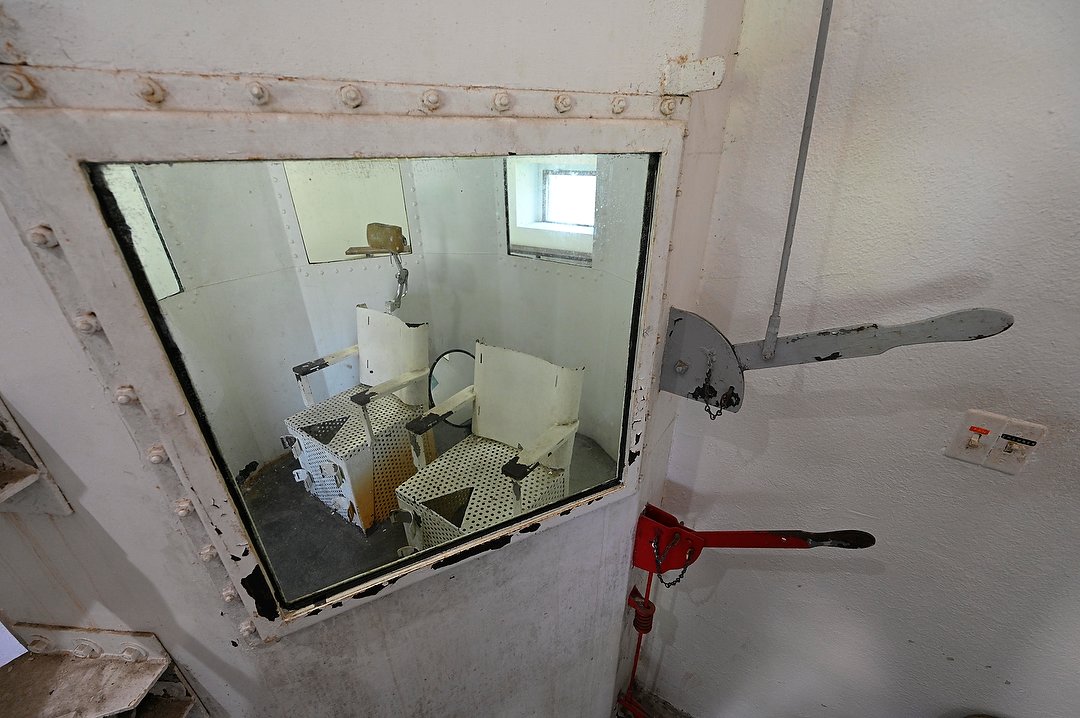
Pulling one of these levers would drop a cyanide pellet into a container of acid beneath the chair the prisoner was strapped into. Occasionally, two prisoners would be executed at the same time. The room the condemned were in was sealed off from the rest of the building, but windows allowed officials and witnesses to watch. Nikon Z 6 II, Aperture Priority, Auto white balance, ISO 1600, 1/60 at f/6.3 in Matrix metering, +0.3 EV, Nikkor Z 14-30mm f/4 S lens at 14mm.
(If you like this story, please share it with your friends and let them know about the links on photography that I post on my business Facebook page. I’m also on Instagram and Twitter, @reedhoffmann. And if you’re curious about the workshops I teach, you can find them here. And, you can subscribe to this blog on my home page.)

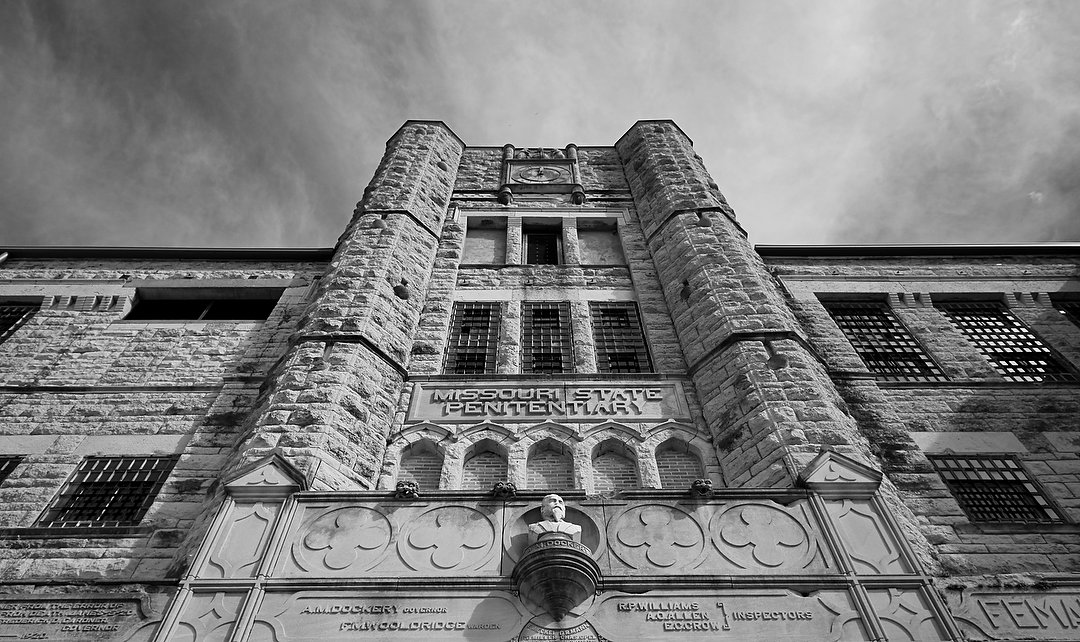
grim and inhumane